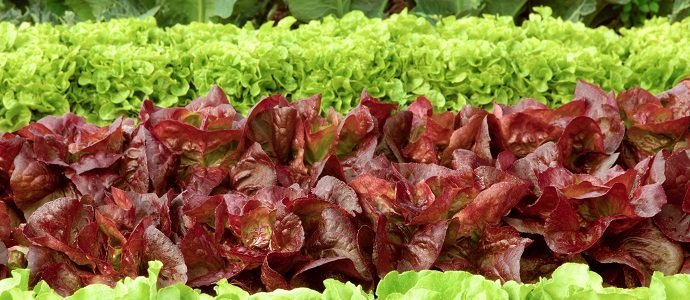Home » Posts tagged 'TOBIAS ROBERTS' (Page 2)
Tag Archives: TOBIAS ROBERTS
A Primer on Creating Soil

A PRIMER ON CREATING SOIL
Good agriculture depends on good soil. The problem over the past 10,000 years of our human attempt to live off the land (and especially during the last sixty years or so), is that crops take nutrients from the soil, and without proper husbandry, soil fertility will deplete. The “pseudo-solution” offered by the Green Revolution has been to import petroleum-based fertilizers to make up for our lack of stewardship of the soil´s fertility, though the negative effects and rampant unsustainability of that approach are well known.
Every agrarian culture around the world has developed their own systems for trying to maintain the balance between our human need for food and the soil´s need to be replenished. From “night soil” being applied to rice fields in China, to leaving large patches of land fallow to naturally recuperate, to actively incorporating animal manures, agrarian people have known that their livelihoods depend on the continued fertility of the land.
What follows are a few simple suggestions on how all of us can participate in the ongoing work of creating the fertile soil upon which all of our lives depend.
THE COMPOST PILE
The compost pile is a necessary part of every homestead and every garden. It is by far the easiest way to recycle kitchen scraps, grass clippings, leaf litter, and even your dog´s poop into rich, fertile soil that will add fertility and fecundity to every garden bed. Making compost is simply the process of providing the necessary conditions so that the millions of microscopic organisms can feast on your leftovers. Like lasagna gardening, it is basically the process of stacking up in layers a variety of different organic materials to allow them to decompose.
While there is no “recipe” for making compost, here are some general guidelines:
…click on the above link to read the rest of the article…
The New Surburbanism

THE NEW SUBURBANISM
Many people in industrial societies live in the suburbs which are really neither city nor country living. Many people have openly criticized the suburban way of life as the apex of consumer lifestyle highly dependent on fossil fuel input. Suburban life is a sort of pseudo-rural life where affluent middle and upper-class people purchase land “in the country” in order to enjoy the tranquility of being close to nature and having less population density surrounding them.
However, this proximity to nature is superficial and superfluous since the majority of suburban people have little direct contact with the land on which they live. They are, in essence, people who make their living in the city and who have an urban mentality but who have the affluence that permits them to commute from a very human-controlled rural area to the urban areas that sustain them monetarily.
Besides the enormous amount of fossil fuels used simply in commuting back and forth, another hallmark of wastefulness that characterizes suburban neighborhoods is the lawn. Those vast expanses of pesticide-filled green monocultures that surround every house actually began in Victorian England. Lawns were a way for the rich to show the rest of their neighbors that they had enough land that they could afford to leave large parts of their holdings follow and not grow anything productive.
What began as an arrogant display of wealth has grown into an essential part of almost every suburban home. When considered from a distance, lawns are the quintessential display of the insanity of our current civilization. The typical suburban family in any industrialized nation probably has between 1-2 acres of land that they dedicate several hours to each week mowing, fertilizing and spreading chemicals in order to maintain the “weeds” at bay.
…click on the above link to read the rest of the article…
Questioning the Growth Economy

QUESTIONING THE GROWTH ECONOMY
If you have ever driven through rural Kentucky or Ohio or Pennsylvania, chances are you have run across a horse drawn carriage with a group of people who appear to have emerged from the 1700´s. Many Amish and Mennonite communities still ardently and stubbornly maintain a pre-technological and pre-industrial lifestyle despite being surrounded by consumer capitalist civilization.
For many observers, these simple, hardworking farm communities are like a living antique; a surviving relic from bygone eras. Instead of seeing them as important sources of knowledge or bearers of much-needed skills that will be necessary for the construction of a more sustainable society, we see them as nothing more than as a unique field trip for elementary school kids or a place to buy strawberries come spring time.
For many people, though the Amish or Mennonite communities may be interesting, the idea of returning to a pre-industrial lifestyle is considered heresy. We may admire their sense of community and strong ties to land and place, but we can´t imagine living without our cars and smart phones.
The Hutterites are an ethnoreligious group that takes their anti-technology view to an extreme. There over 40,000 Hutterites living in colonies in Canada and the northern United States. Based on their somewhat radical religious theology, the Hutterites believe that all technological progress (from the 1800´s onwards) is a form of sin that goes against the Creator´s plan for the world. Subsequently, they sun any sort of technological advancement and live lives of simplicity.
Appropriate technology does not advocate for a return to pre-industrial lifestyles. While we do affirm that Mennonite and Amish colonies have much wisdom and knowledge and live a much more sustainable and healthy lifestyle than us modern folk, we also feel that technology can offer important instruments to help us in the task of constructing resilient and sustainable livelihoods.
…click on the above link to read the rest of the article…
What Defines Appropriate Technology?

WHAT DEFINES APPROPRIATE TECHNOLOGY?
OUR CURRENT ADDICTION TO TECHNOLOGY
If there is one defining aspect of our modern civilization it´s that we are a technological species. Compared to other organisms with whom we share this planet, we Homo sapiens aren´t exactly well adapted to long term survival. We have no coat of fur to keep us warm, we don´t have sharp teeth or claws to hunt with, and we´re extremely vulnerable to the elements around us at all times.
In fact, we kind of resemble in some ways a mishap of evolution; an unfortunate paint spill that sticks out on an otherwise beautifully painted canvas. If it weren´t for our ability to shape and alter our surroundings through technology we would have most likely long ago passed into the annals of history along with the dodo bird and the passenger pigeon.
The lion has its deftness and sharp claws, the monarch butterfly has its mesmerizing and threatening wing patterns, and us humans have nothing but a decently sized brain and the gift of self-conscious which has allowed us to reshape our surroundings through the use of technology. That which is our defining characteristic, however, has also been one of the main causes of the crises we now face.
HOW TO DEFINE WHAT IS APPROPRIATE FOR A PLACE
There are no universally appropriate technologies because we live in a diverse world where different contexts affect the “appropriateness” of each place. Agrarian author Wes Jackson states that nature must be our measure of what is right and correct for each place. We would add that the realities of the community where we live should also be an important factor regarding how we are to live in our places.
The fourth permaculture principle is “apply self-regulation and accept feedback.” Several of our current technologies are simply too large and too powerful to allow us to receive feedback.
…click on the above link to read the rest of the article…
Tree Crops

TREE CROPS
For thousands of years, farmers have generally differentiated forestry and agriculture. Forests were either left alone or planted and maintained as a source of fuel and building material. In the best of cases, certain trees also offered forage for livestock and other farm animals. The farm fields were generally kept clear of any trees because farming was relegated to nothing more than the planting and harvesting of annual (mostly grain) crops.
The only trees acceptable to farming were fruit bearing trees, and these were usually planted on areas of the farm where the terrain was too steep or otherwise unfit for the tillage needed for annual grain crops. With the ever more obvious problems related to the annual tillage of the soil and annual agriculture in general, many people have begun to consider the possibility of growing trees as crops.
THE BEGINNINGS OF FOREST AGRICULTURE
The idea of growing trees as crops is not a new one. Indigenous cultures around the world have been growing and managing diversified, edible forest ecosystems (food forests, in permaculture jargon) for thousands of years. From the multi-story tropical food forests of Mesoamerica to growing evidence that large swaths of the Amazon Jungle were actually human-controlled environments, indigenous peoples around the world have long understood the benefits of tree crops and perennial agriculture systems.
From the western perspective, however, it was J. Russell Smith in the 1920´s who first began considering the idea of trees as crops. Smith´s seminal work was published under the title of “Tree Crops: A Permanent Agriculture” in 1929. In this book, he looked at several farming cultures around the world that, instead of relying on the annual tillage of the soil for grain crops, actually depended on carefully managed forest ecosystems that provided an abundance of edible foodstuffs.
…click on the above link to read the rest of the article…
The Best Perennial Vegetables

THE BEST PERENNIAL VEGETABLES
One of the tasks that I most dislike about the farming life is preparing the raised beds each time I want to plant out a crop of tomatoes, peppers, eggplant, or onion. While I do enjoy eating a fresh tomato from my garden, the tedious, repetitive tasks of preparing the garden bed, weeding, and then planting out a winter cover crop does take up more time than I would like. Pasturing chickens over the beds in the fall time once the crops have stopped producing, does save some human labor, but with our orchards, pastures, and forests to take care of, I often find myself without adequate time to dedicate to beds of annual vegetables.
AN EXPERIMENT WITH ASPARAGUS
About three years ago, I purchased a bag of about 5,000 Mary Washington Asparagus Seeds. The seedlings germinated well in our cold, wet, mountain climate, and my family and I decided to dedicate about half of our on contour garden terraces (about ¼ of an acre) to the Asparagus crop. After a day or two of weeding and preparing the soil, we planted out the crop, mulched them heavily, and then eventually forgot about the Asparagus for several months as other farm jobs took over our attention.
About six months later, and two days of heavy weeding, we found the asparagus crop to be thriving despite our neglect. While we weren´t able to harvest the crop for the next two years, the Asparagus grew to cover the entire three terraces, essentially shading out most of the weeds. During the spring of the third year, we were gifted with bountiful amounts of asparagus that not only would be harvested this year, but for decades to come.
…click on the above link to read the rest of the article…
The Problems With Our Industrial Water System Today

THE PROBLEMS WITH OUR INDUSTRIAL WATER SYSTEM TODAY
Imagine that you´re in your home on a rainy afternoon. It has been raining for two days straight now and your front yard is full of puddles. The water is rushing along the drain ways on the side of the road and the local news is talking about the stress on the local sewer system that this extra rain is causing. When you turn on the faucet in your kitchen sink to wash up the dishes from lunch, however, the water that you use may very well be coming from hundreds of miles away in an area that may very well be experiencing a drought.
Our conventional, industrial water supply has very little connection to local watersheds or local ecosystems. Rather, the focus has been on taking water from areas where water is apparently abundant and moving it to areas with high population densities or areas where water is scarce. To do this, we depend on huge, energy dependent pumping systems that most likely depend on the continued availability of cheap fossil fuels to fuel these pumps.
A CITY IN THE DESERT
Las Vegas, Nevada is the epitome of unsustainability (and lunacy) when it comes to water. Located in the middle of a desert where water is scarce, Las Vegas has depended on Lake Mead for its water. However, in recent years it has become apparent that the thirsty city of Las Vegas is pulling water out of Lake Mead faster than the natural inflows can replenish it. To solve this problem, the city of Las Vegas has begun purchasing rights to groundwater throughout the state hoping to assuage their water crisis by pumping water out of the ground and sending it hundreds of miles away to irrigate the many golf courses in Las Vegas and offer luxurious hot showers to the over 100,000 hotel rooms of the signature casinos of the city.
…click on the above link to read the rest of the article…
Cooperation Versus Competition: An Evolutionary Perspective

COOPERATION VERSUS COMPETITION: AN EVOLUTIONARY PERSPECTIVE
Charles Darwin is credited for forming the idea of evolution. During his explorations around the world and his intimate observation of how animal and plant life evolved over time, he came to believe that everything followed one basic maxim: “the survival of the fittest.”
This theory states that organisms will inherently struggle against one another in competition for limited resources that make life possible. Following from this logic, only the strongest, most robust and most adapted species are thus able to survive the evolutionary struggle. The emergence of life, then, is based on competition alone and individualistic competitive drive is one of the most important and a necessary trait if a species wants to survive. In essence, this theory of evolution has also given justification to everything from capitalist economic theory to pathological ideas of Social Darwinism that believed that the dominance of the Caucasian race obeyed unchangeable physical laws.
But is it true? Is life simply the outcome of cutthroat competition? Elizabeth Sahtouris is an American evolutionary biologist that is most well known questioning some of Darwin´s most basic assumptions about the evolution of life. Sahtouris says that “Darwin was right about species competing for resources but he never saw beyond it as just one stage in the maturation cycle. Evolution proceeded when crises created by species forced them to go beyond “survival of the fittest” and find cooperative strategies for survival.”
The survival of the fittest competition, then, is but one stage of a larger evolutionary cycle. Sahtouris mentions the example of how the very first bacteria that began life over 4 billion years ago spent billions of years in the competitive stage of their evolution. This competitive drive allowed them to colonize large areas of the earth and advance life itself, but had they continued with their purely selfish and competitive drive, they would have eventually died out.
…click on the above link to read the rest of the article…
The Revolutionary Civilizational Paradigm Eco Villages

THE REVOLUTIONARY CIVILIZATIONAL PARADIGM ECO VILLAGES
The vast majority of people in the world no longer live in any sort of human settlement that could be considered a village. Rather, the increased urbanization of our species and the displacement of rural communities has led to a collection of isolated individuals who have very little relationship to the geographical place where they live and the people they share that place with. During the last two decades, however, thousands of people have begun to challenge this paradigm through the creation of Eco villages.
THE LOSS OF BOTH ECOLOGY AND VILLAGES IN MODERN SOCIETY
When you fly into any major city, one of the most common sights is the neat rows of houses in suburban neighborhoods. The cul-de-sacs and streets seem to be designed with an almost super human exactness and neatness. The similar homes all with their green lawns and neat driveways are in many ways the exemplification of the American Dream.
Behind this neat appearance, however, there are serious problems surrounding the suburban neighborhood. Their reliance on huge amounts of fossil fuel energy, the need to use a car to get to work and for pretty much any other need, the lack of any true sense of community or neighborliness, and their disconnection from the natural world all make suburban communities uniquely unsustainable.
One of the defining moments of the history of human civilization was when people came together to live in communities or villages. These spaces allowed for people to work together to provide for their livelihoods while also maintaining the surrounding landscape in ecological health.
Today´s suburban neighborhood has very little relationship to any sort of village. Rather, it is simply a connection of individual homes in a certain area. Most people never know their neighbors nor share any sort of connection with them.
…click on the above link to read the rest of the article…
The Crises That Have Come With Urbanization

THE CRISES THAT HAVE COME WITH URBANIZATION
One of the defining aspects of our current civilization and one of the most worrying trends of modernity is our urbanization as a species. When we take the long view of human history, it becomes obvious that for 99% of our history, we have been a rural people, the majority of us making our living off the land and in small, agrarian communities.
Though history (especially the last 2,000 years or so) has been written by the pens of the powerful. Concentrated in urban centers, our collective dependence on rural areas and the people who lived and farmed there was a stalwart of our survival.
According to recent studies, we have recently crossed the threshold of becoming a majority urban-dwelling species. Over half of our more than 8 billion people live in urban centers around the world and that number is only expected to increase in years to come. What does this mean for our collective survival? Is our urban-ness sustainable and desirable? How can we forge a healthy, ecological civilizational paradigm that is built around billions of people living away from the land where the most basic necessities of our survival are found and cultivated?
To begin with, we want to recognize and affirm that it is imperative for us as humans to reverse the trend of increasing urbanization. According to UN Habitat, every WEEK, close to three million people migrate from rural areas into urban areas. If this trend continues, the crises that come with urbanization will only propagate and magnify.
While we can construct sustainable urban spaces with the amount of people currently living in cities, we simply cannot continue to depopulate rural areas where the natural resources for our survival are found.
…click on the above link to read the rest of the article…
Turn Your Sink and Shower Water Into An Abundant Oasis

TURN YOUR SINK AND SHOWER WATER INTO AN ABUNDANT OASIS
Chances are that you have probably heard of the importance of conserving water. Dozens of governmental and non-governmental organizations have orchestrated campaigns trying to convince the average person to reduce the amount of water that they use. From high-efficiency laundry machines to shower heads that are in line with the current national energy policy act standard, most advocacy for conserving household water use focuses on having us use less water.
While reducing the amount of water we use is undoubtedly important, re-utilizing water is a strategy and approach that is very rarely considered. Greywater recycling constitutes a way to reuse the water that goes down our drains. When done correctly, it comprises no danger to human health while also leading to greater ecological resiliency.
WHAT IS GREYWATER AND HOW MUCH OF IT DO WE USE EVERY DAY?
Every day most people send hundreds of gallons of greywater into sewer and septic systems. Greywater, or the water from our sinks, showers, dishwasher and laundry machines, differs from black water (from toilets) and contains mostly soap residues. This water can easily be recycled into the landscape allowing for an extra water source and source of fertility. Even in the driest regions, greywater recycling can allow you to create an oasis from the water you normally waste.
In places like California and the desert southwest, we read headlines almost on a monthly basis of how severe drought is causing problems for households. People are advised to take shorter showers and stop watering their lawn, but virtually no attention is given to what to do with the water that does go down our drains. It is estimated that between 60% and 80% of residential waste water is wash water that comes from our dish washer, sinks, showers, tubs, and washing machines.
…click on the above link to read the rest of the article…
Earth Tubes: A Natural Way to Air Condition Your Home

EARTH TUBES: A NATURAL WAY TO AIR CONDITION YOUR HOME
There is nothing nicer than coming inside on a hot, muggy summer day to feel the freshness of an air-conditioned home. Traditional air conditioners, however, are one of the most energy-intensive appliances in our homes. Only a couple feet underneath where you are standing, however, the air is always a comfortable 55 degrees Fahrenheit. If only it were possible to get that cool air from underneath your feet into your blistering hot home. Earth tubes offer a natural, ecologically sound air conditioning option to keep your home cool on even the hottest summer days.
HOW MUCH ENERGY DOES YOUR AIR CONDITIONER CONSUME?
As with a number of aspects of our modern-day industrial civilization, we simply don´t know or understand the ecological costs associated with the comforts we have come to depend on. In many ways, ignorance is bliss and it is comforting to naively believe that a cool home on a hot summer day is a normal part of the landscape.
The cool air that dries the sweat from our foreheads, however, is far from inoffensive. While some small, window-based air conditioners consume up to 500 watts, a large central air conditioning unit that many large homes and almost all businesses have is easily a 3500-watt appliance.
…click on the above link to read the rest of the article…



